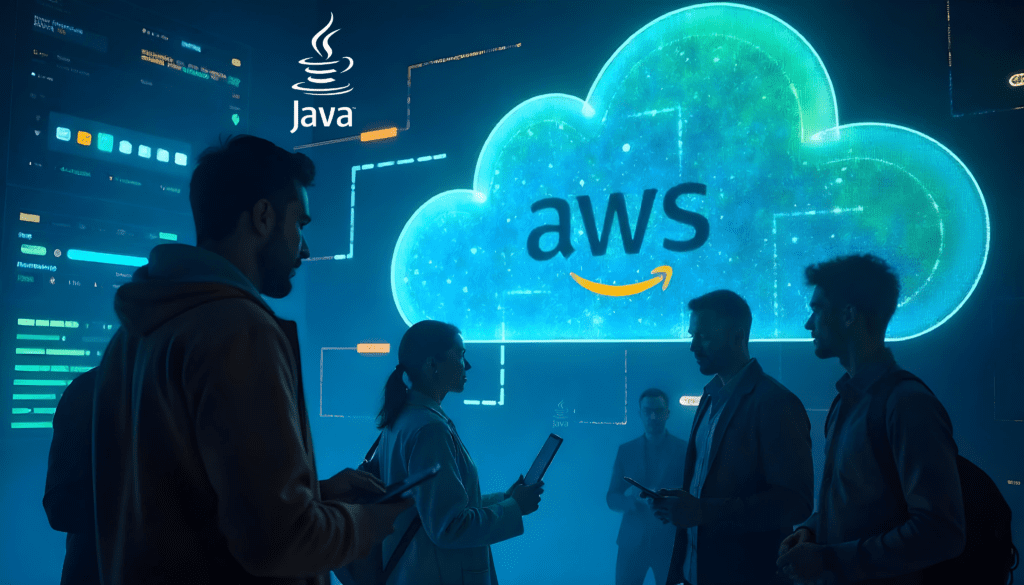What is Java Application Modernization? Upgrade, Migrate, and Optimize with AWS Cloud Solutions
Application Modernization in IT means making businesses faster, more flexible, and efficient. Many IT leaders see it as automating tasks to speed up changes. Java modernization is a key step, including Java cloud migration and switching to microservices. Automation helps teams improve CI/CD pipelines, making development and deployment smoother. AllCode supports businesses in this journey, helping them adopt modern IT solutions for better performance and growth.

What is Java Application Modernization?
5 Key Strategies for Modernizing Applications
One example of application modernization is updating old Java applications by moving them to the cloud. Many companies migrate Java applications to AWS to make them faster, more secure, and easier to maintain. Let’s look at 5 key strategies to modernize applications:
1. Rehost (Lift and Shift)
Rehosting is moving software from one location to another without changing how it works. This might involve moving from a physical server to a virtual machine or transferring an on-premise app to the cloud. This is commonly known as “carry and shift” because the software is picked up from its old location and moved to a new one without modifying its code.
For example, if an industry runs Java software on a private records center, it could migrate the Java software to AWS to take advantage of cloud blessings like lower preservation and better scalability. This technique is rapid and value-powerful but does not significantly enhance performance because the software stays the same.
2. Replatform
Replatforming is similar to rehosting but consists of small upgrades to take advantage of a brand-new environment. The utility’s center structure has not changed, but a few minor updates have been made to improve performance.
For instance, an enterprise may migrate Java software to AWS and switch from conventional to AWS-controlled databases. This makes the gadget greener without rewriting the whole code.
3. Rearchitect
A proper utility modernization instance is an enterprise that uses a single big Java application for all its operations. If the app is slow and difficult to update, the agency can migrate it to AWS and transform it into microservices. In this manner, distinct teams can work on separate parts of the app without affecting the whole device.
4. Rebuild
For example, a company using an outdated Java application may choose to migrate the Java application to AWS but rewrite it using cloud-native technology. This improves speed, security, and scalability but requires more time and resources.
5. Replace
For instance, a corporation using in-residence Java software for client management might also decide to forestall its usage and switch to a cutting-edge SaaS (Software as a Service) tool as an alternative.
Upgrade Your Java Applications with Amazon Q Code
Amazon Q Code Transformation helps solve this problem. This AI-powered tool simplifies Java application upgrades, making them faster and easier.
Fast and Easy Java Upgrades
Upgrading Java applications manually took days or weeks. With Amazon Q Code, it now takes only minutes. For example, an Amazon team upgraded 1,000 applications in just 2 days, each taking around 10 minutes on average.
How Amazon Q Code Works
✔ Scans the existing code and finds outdated components
✔ Creates a plan to upgrade the application
✔ Updates dependencies and replaces outdated code
✔ Uses modern frameworks and security best practices
✔ Generates test results for review before final approval
With these steps, businesses can keep their applications updated, secure, and running efficiently.
Why Use Amazon Q Code?
By upgrading applications faster, companies save time and reduce costs. They can focus on new business needs instead of fixing old software. Amazon Q Code also improves performance, security, and efficiency.
For businesses looking for expert guidance, an AWS cloud consulting company can help with smooth migrations. AllCode ensures best practices are followed, making modernization even more effective.
